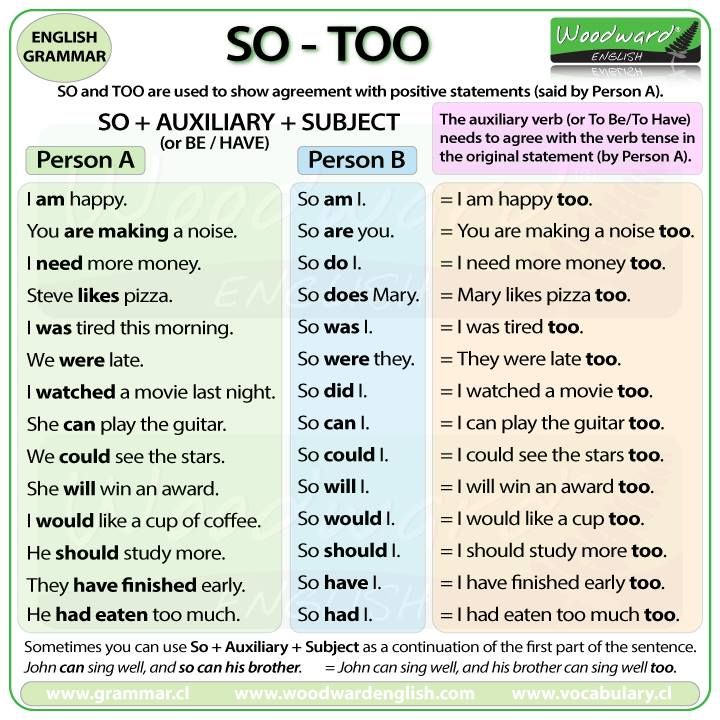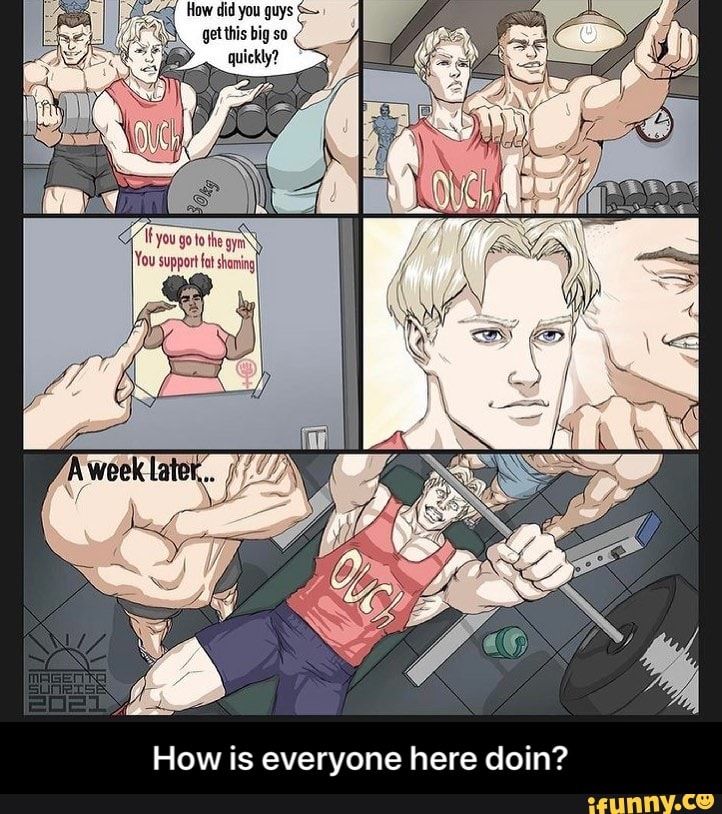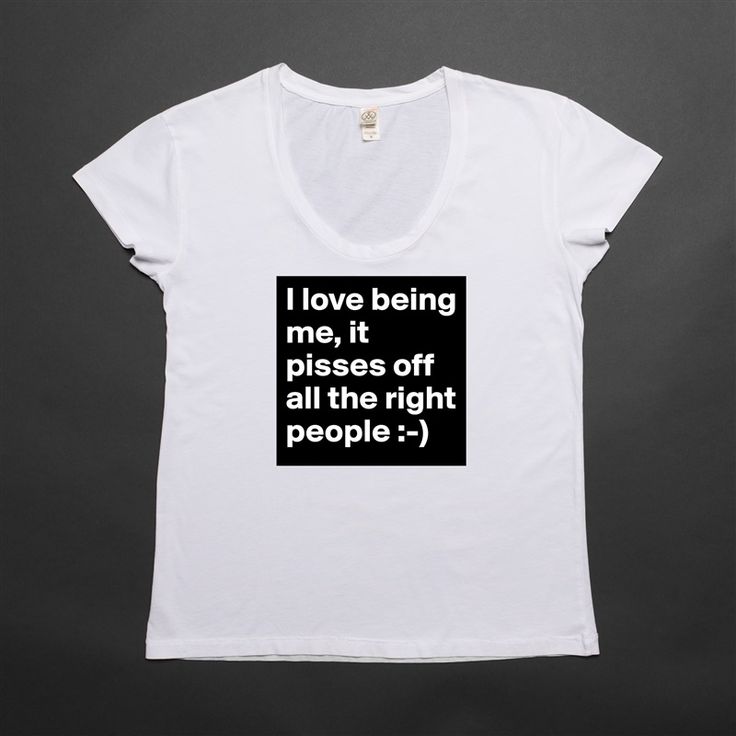By Tom Krishner, The Associated Press
It’s time to get some traction.
At any time now, snow could fall over a broad swath of America, and that means your tires need to be checked.
Experts say if the rubber is worn, you could slide, crash or get stuck, even in a light snowfall. Depending on where you live and how badly you need to get someplace in bad weather, you might want winter tires. All-season tires might be an option, but they won’t start and stop as well in ice and snow.
Experts say late October is a good time to shop for tires and get them installed so you’re ready. Here’s how to figure out whether you need new tires and tips from experts on what kind of rubber to buy:
Check the tread depth: Stick a quarter into the tire grooves at several spots with George Washington’s head upside down. If you can see the top of Washington’s hair, you have 4/32 of an inch of tread or less. That means it’s about time to replace your tires. You may have a little time left in warm, dry weather, but tires with less than 4/32 won’t grip well in ice and snow. People used to use a penny to check tread depth. But if the top of Abraham Lincoln’s head can be seen, that means you’ve only got 2/32 inches of tread left. “At that point most tires are basically worn out and need to be replaced immediately,” says Gene Petersen, tire program manager for Consumer Reports, which does extensive tire testing.
Winter or all-season? It depends on where you live, how urgently you need to be somewhere in the snow, and whether your vehicle is 2-wheel-drive or all-wheel-drive. In an area with moderate snowfall, you probably can get by with all-season tires, especially if you can wait for plows to clear roads before going anywhere. Generally, if you live south of Cincinnati, Ohio, then all-season tires should work, says Woody Rogers, director of tire information for Tire Rack, an online tire store in South Bend, Ind. But to the north, where heavy snowfall is more likely, winter tires will be better. If the engine powers all four of your wheels, good all-season tires may suffice. Generally, winter tires on a two-wheel-drive vehicle grip better than all-season tires on a four-wheel-drive vehicle. Experts say all-wheel-drive makes a big difference starting off in snow. But it won’t help you stop in snow. That’s where winter tires come in. They’ll stop faster in slippery conditions because they grip ice and snow better due to specially designed soft tread compounds. In bad weather, winter tires grip almost like they’re being driven on dry roads, says John DiPiazza, part owner of A&A Tires in Milwaukee. “It’s quite amazing,” he says.
But to the north, where heavy snowfall is more likely, winter tires will be better. If the engine powers all four of your wheels, good all-season tires may suffice. Generally, winter tires on a two-wheel-drive vehicle grip better than all-season tires on a four-wheel-drive vehicle. Experts say all-wheel-drive makes a big difference starting off in snow. But it won’t help you stop in snow. That’s where winter tires come in. They’ll stop faster in slippery conditions because they grip ice and snow better due to specially designed soft tread compounds. In bad weather, winter tires grip almost like they’re being driven on dry roads, says John DiPiazza, part owner of A&A Tires in Milwaukee. “It’s quite amazing,” he says.
Read the reviews: If you decide to go with all-season tires, make sure you read test reports and consumer ratings. All-season tires vary wildly in their ability to grip snow, says Rogers, whose store also does tire testing. “The gap from good to bad is staggering,” he says. DiPiazza says you should stick to well-known brands for the best performance. If you choose winter tires, also read reviews. Tire Rack’s tests show less of a variance between snow tires from different brands. Deeper grooves generally mean more snow traction, but you can’t always tell performance from looking at a tire, Petersen says. Although winter tires have improved, they still compromise dry-pavement handling for snow and ice performance.
DiPiazza says you should stick to well-known brands for the best performance. If you choose winter tires, also read reviews. Tire Rack’s tests show less of a variance between snow tires from different brands. Deeper grooves generally mean more snow traction, but you can’t always tell performance from looking at a tire, Petersen says. Although winter tires have improved, they still compromise dry-pavement handling for snow and ice performance.
Replace all four tires: Putting snow tires on just the two drive wheels can make your car difficult to handle in snow and ice. When two wheels on one axle grip better than the other two, it creates a handling imbalance that could be treacherous if you’re trying to stop quickly or steer around something. “Those are the situations where you need your car to work best, an emergency situation,” says Rogers.
The price: Snow and all-season tires generally cost about the same. Consumer Reports found that sedan tires average around $145 each. SUV tires average $178 apiece. Shopping around could get you a better deal. Make sure the price includes mounting and balancing.
SUV tires average $178 apiece. Shopping around could get you a better deal. Make sure the price includes mounting and balancing.
Buy early: Experts say now is the time to buy, when there’s time to do research and there’s an abundant selection of snow or all-season tires. If you wait until the first snowfall, you might get stuck with what the dealer has on hand in the size that fits your car. But don’t buy too soon: DiPiazza recommends installing winter tires when the daily high temperature is generally below 50 degrees.
We invite you to use our commenting platform to engage in insightful conversations about issues in our community. We reserve the right at all times to remove any information or materials that are unlawful, threatening, abusive, libelous, defamatory, obscene, vulgar, pornographic, profane, indecent or otherwise objectionable to us, and to disclose any information necessary to satisfy the law, regulation, or government request. We might permanently block any user who abuses these conditions. As of June 15, 2022, comments on DenverPost.com are powered by Viafoura, and you may need to log in again to begin commenting. Read more about our new commenting system here. If you need help or are having issues with your commenting account, please email us at [email protected].
We might permanently block any user who abuses these conditions. As of June 15, 2022, comments on DenverPost.com are powered by Viafoura, and you may need to log in again to begin commenting. Read more about our new commenting system here. If you need help or are having issues with your commenting account, please email us at [email protected].
Most Popular
Kiszla: All it took to fix quarterback Russell Wilson was for Broncos to fire team's worst coach in last 40 years
Retail giants Big Lots, Macy's are tightening their belts, closing Colorado stores this month

Keeler: Sean Payton represents everything Russell Wilson wants to be. But Jim Harbaugh is right choice as coach for what Broncos NEED to be.
Ask Amy: Ex’s misconduct may affect his college
What Lauren Boebert got from her fight against Kevin McCarthy
Facing felony charges, Colorado representative resigns at start of legislative session
Broncos' coaching search picks up steam; Evero interviewed
Ground stop issued at DIA due to airspace volume after nationwide FAA system outage
Colorado BBQ legend and NFL Hall of Famer's restaurant legacy comes to an end
 5 million
5 millionBoulder home tops December sales at $7.5 million
Hide Show
Our Showroom Is OPEN— No Appointment Necessary, Walk-Ins Welcome!
Having good winter tires is crucial during the winter season in Nova Scotia. Whether you're driving on snow, slush, or cold, dry pavement, you want to be sure that your vehicle maintains peak traction levels at all times. A key factor in this is making sure that your winter tires still have the tread depth required to grip the road.
My vehicle has 4-wheel drive, so I don't need winter tires.
Even if your vehicle is equipped with 4-wheel drive, you should still have winter grade tires put on your vehicle. 4x4 only aids in accelerating and maneuvering, and is therefore not a substitute for the traction provided by winter tires. Winter tires also have a reduced risk of puncturing, and have specially designed tread patterns to push water away to help you avoid hydroplaning on wet roads.
If your winter tires have tire tread wear indicators built in, then knowing if you need to replace them can be as simple as checking the indicators. The tire tread indicators are the small raised bars, usually 6 on a tire, located along the inside of the tread grooves. They indicate the minimum tread depth permitted. Once the indicators begin to wear, the tires need to be replaced immediately.
Checking the depth of your tire tread doesn't require the use of fancy tools. It can be as simple as taking an ordinary toonie and sticking it upright in the shallowest groove in your tires, and seeing how much of the coin remains uncovered.

A tire tread gauge is a useful tool to keep in your glove compartment, and can be purchased in any hardware or home improvement stores. To use, simply find the shallowest groove in the tire tread, and insert the pin into it, while pushing the base flush with the tire.
 The tires are bald and are not safe for winter driving.
The tires are bald and are not safe for winter driving.Though uncommon, there are some brands of all-weather tires designed for year-long use that have the winter tire symbol. These tires usually have an extra marking on the tread of the tire that acts as an indicator. Once this indicator has worn off, it means the tread is no longer at a depth that is required for safe winter driving, and that they need replacing.
Not all winter tires will wear at the same speed, under the same conditions. For example, winter tires designed for icy conditions tend to wear out faster than tires designed for snow. There are many factors that can affect the lifespan of your winter tires, but making sure that you properly care for your tires can help extend it.
 Tire pressure should be checked at least once a month, or, if you rack up a lot of mileage on a regular basis, once a week.
Tire pressure should be checked at least once a month, or, if you rack up a lot of mileage on a regular basis, once a week.A tire marked with M+S means it has some capability in winter driving, in comparison to summer tires, but the testing to earn this mark only includes driving on packed snow and mud, and does not include measuring traction on ice, slush or cold, dry roads. This means tires bearing this symbol are not equipped to handle the full force of our Nova Scotia winters.
Only tires marked with the winter tire symbol (3 peak mountain and a snowflake) are true winter tires, that have been tested for snow traction and winter driving at temperatures below +7°Celsius.
Our certified technicians are here to fulfill all your vehicle needs. We can check over your tires, and give you a recommendation personalized to fit you. Schedule an appointment today.
The type of tires you have on your vehicle affects where they are moved during a rotation service. If you have directional tires, then the tires must be switched with the tire on the same side (ex: front left tire switched with rear left tire and vice versa). If you have non-directional tires, then the tires must be rotated in an "X" pattern (ex: front left tire switched with rear right tire and vice versa).
We believe in customer service first, so you will never feel pushed or pressured into a purchase. Instead, we will provide you with all the options and information necessary for you to make an educated decision. We have a strong and committed sales staff that works diligently to guarantee that you enjoy your entire purchasing experience. Our knowledgeable business manager can assist you in the leasing or financing process, and keep you informed on warranties and insurance. The dealership is supported by a team of managers who work daily to ensure we are price leaders in the local market, and that customers near and far are satisfied.
Our knowledgeable business manager can assist you in the leasing or financing process, and keep you informed on warranties and insurance. The dealership is supported by a team of managers who work daily to ensure we are price leaders in the local market, and that customers near and far are satisfied.
In fact, the average life of any tire is 5-7 years, but a lot depends on how the owner treats his car. Aggressive driving, improper seasonal tire storage, unrepaired suspension/balancing problems, incorrect pressure and other errors can significantly shorten tire life. But worn tires can be a serious problem on the road: an increased risk of uncontrolled skidding, hydroplaning, even accidents is the price that drivers and passengers have to pay for using old tires. nine0003
Each manufacturer indicates the so-called wear index on the tire profile, which most often looks like the inscription “Treadwear 100” and means a maximum of 48,000 km on a standard road surface (polygon). In a real environment and often not the most ideal roads, this number actually needs to be divided by 1.5 - we get 36,000 km.
In a real environment and often not the most ideal roads, this number actually needs to be divided by 1.5 - we get 36,000 km.
By analogy, if the wear resistance index is 150, then this means “factory” 72 thousand km, 200 - 96 thousand km., and so on.
What are the dangers of worn tires on the road:
adhesion to the roadway deteriorates, which leads to an increased likelihood of skidding, accidents, hydroplaning in case of rainy weather;
reduced cross-country ability in off-road conditions;
increases the risk of a tire puncture while driving. nine0003
It is also worth remembering that the issue of tire wear is regulated by traffic rules, and you can get a fine for using “bald” rubber. Knowing what maximum tire wear is acceptable, this is easy to avoid: 1.5-2 mm for summer, and 4-5 mm for winter (a more accurate figure is indicated by the manufacturer).
1. According to the wear indicator on the tire. To find this indicator, you need to inspect the side of the tire and find one of the markings: a triangle, a company logo, a snowflake, or the abbreviation TWI. If the tread has worn down to this indicator, it means that the tire needs to be disposed of urgently. nine0003
According to the wear indicator on the tire. To find this indicator, you need to inspect the side of the tire and find one of the markings: a triangle, a company logo, a snowflake, or the abbreviation TWI. If the tread has worn down to this indicator, it means that the tire needs to be disposed of urgently. nine0003
2. Many people in the old fashioned way prefer to use a 10-kopeck coin. Insert it into the tread with the inscription "10 kopecks" towards you, and if it is visible, the wear level is too high, you need to replace the tire. This method is convenient, but not entirely accurate: by measuring wear in different parts of the tire in this way, it will be difficult to estimate its unevenness by eye, and this is also an extremely important indicator.
3. It is optimal to use a special gauge, depth ruler or caliper for these purposes. This will allow you to measure the wear of the tread in different parts of the tire with an accuracy of up to a millimeter and understand if there is uneven wear. nine0003
nine0003
If measurements show different results in different parts of the tread, it is important to determine exactly how your tires wear in order to understand where and what the operating error is.
If the tread wears more on the sides and the center wears off less, this means that the tire pressure is insufficient and the contact patch with the road is not correct. This leads not only to poor vehicle stability, but also to increased fuel consumption. nine0003
If the tread is worn down the middle but the sidewalls are fine, then your tires are overinflated. Sometimes this is done intentionally in order to save fuel, but in this case, the tires will still have to be changed ahead of schedule.
There is also the possibility of increased wear on the inside or outside of the tread - this indicates an incorrect camber. A visual table with wear options and their causes:
Cracks on the sides of tires can indicate frequent off-road driving, improper storage, low-quality rubber or long service life, as well as incorrect tire pressure.
Bulges or "hernias" on the sides of the tires appear as a result of the side part hitting hard obstacles. Tires with such damage are not recommended. nine0003
Dents on the tread indicate insufficient depreciation and unadjusted camber. Having found such damage, it is necessary to drive the car to the service and make sure that the suspension is in good condition.
Individual wear spots on the tread indicate aggressive driving / braking, skidding with wheel locks, or prolonged parking of the car in one position. nine0003
Most often, this is required for the sale and purchase of used tires in order to orient the buyer in the degree of their wear. Many sellers give this figure at random, but this method has nothing to do with the actual assessment of the degree of tire wear. It is also important to understand that a conditional 50% wear for a summer tire is an acceptable value, while 50% wear of a winter tire tread is a sign that the tire cannot be used. Therefore, it is important to know how to accurately determine the percentage of tire wear so as not to get into an unpleasant situation. nine0003
Therefore, it is important to know how to accurately determine the percentage of tire wear so as not to get into an unpleasant situation. nine0003
Many people divide the actual tread height by the height of the same, but new tire, and get a certain percentage of wear. This would be correct, if not for one BUT: we cannot physically erase the tread to zero, and the law prohibits the use of tires with a tread below the permitted values.
You can calculate actual tire wear by dividing the difference between the new tire height and the actual tire height by the difference between the new tire tread height and the minimum possible tread height for that tire, and then multiplying this number by 100. nine0003
If it is impossible to find out the height of the same, but with a new tire, use the average values of your tire type:
| Tire type | Average tread height at start of use |
| Winter tires with Scandinavian tread | 10 mm nine0003 |
| Winter with regular or asymmetric tread | 9 mm |
| High-speed winter | 7 mm |
| Summer tires with classic tread nine0085 | 8 mm |
| Summer speed | 7 mm |
You can check summer tires for wear a little less often than winter tires, since in summer the tread depth is not so important for patency.
If you have assessed the condition of your tires on all of the above factors and realized that the tires are worn out, be sure to replace them with new ones as soon as possible. nine0003
Do you want to choose a tire for your car, but do not understand tire markings well? It's not a problem! In this section, we will help you figure out what tire parameters are, what they mean, and which tire is right for your car.
Find tires / tire catalog
195/65 R15 91 TXL
nine0002 195 is the tire width in mm.65 - Proportionality, i.e. profile height to width ratio. In our case, it is equal to 65%. Simply put, with the same width, the larger this indicator, the higher the tire will be and vice versa. Usually this value is simply called “profile”.
Since the tire profile is a relative value, it is important to take into account when choosing rubber that if you want to put tires with a size of 205/65 R15 instead of the size 195/65 R15, then not only the width of the tire will increase, but also the height! Which in most cases is unacceptable! (except when both of these sizes are indicated in the car's operating book). You can calculate the exact data on changing the outer dimensions of the wheel in a special tire calculator. nine0003
You can calculate the exact data on changing the outer dimensions of the wheel in a special tire calculator. nine0003
If this ratio is not specified (for example, 185/R14C), then it is equal to 80-82% and the tire is called full profile. Reinforced tires with this marking are usually used on minibuses and light trucks, where a large maximum wheel load is very important.
R - means a tire with a radial cord (in fact, almost all tires are made this way now).
Many mistakenly believe that R- means the radius of the tire, but this is precisely the radial design of the tire. There is also a diagonal design (indicated by the letter D), but recently it has practically not been produced, since its performance is noticeably worse. nine0003
15 - wheel (rim) diameter in inches. (It is the diameter, not the radius! This is also a common mistake). This is the “landing” diameter of the tire on the disk, i.e. is the inside size of the tire or the outside of the rim.
91 - load index. This is the level of maximum permissible load on one wheel. For passenger cars, it is usually done with a margin and is not a decisive factor when choosing tires (in our case, IN - 91 - 670 kg.). For minibuses and small trucks, this parameter is very important and must be observed. nine0003
T - tire speed index. The larger it is, the faster you can ride on this tire (in our case, IS - H - up to 210 km / h). Speaking about the tire speed index, I would like to note that with this parameter, the tire manufacturer guarantees the normal operation of the rubber when the car is constantly moving at the specified speed for several hours.
There are two different markings for American tires. The first one is very similar to the European one, only the letters “P” (Passanger - for a passenger car) or “LT” (Light Truck - light truck) are placed before the size. For example: P 195/60 R 14 or LT 235/75 R15. And another tire marking, which is fundamentally different from the European one.
For example: P 195/60 R 14 or LT 235/75 R15. And another tire marking, which is fundamentally different from the European one.
For example: 31x10.5 R15 (corresponding to European size 265/75 R15)
31 is the outside diameter of the tire in inches.
10.5 is tire width in inches.
R - a tire with a radial design (older tire models were with a diagonal design).
15 is the inner diameter of the tire in inches.
Generally speaking, except for inches that are unusual for us, the American tire marking is logical and more understandable, unlike the European one, where the height of the tire profile is not constant and depends on the width of the tire. And here everything is simple with decoding: the first digit of the standard size is the outer diameter, the second is the width, the third is the inner diameter. nine0003
XL or Extra Load is a reinforced tire, the load index of which is 3 units higher than that of conventional tires of the same size. In other words, if a given tire has a load index of 91 marked XL or Extra Load, then this means that with this index, the tire is able to withstand a maximum load of 670 kg instead of 615 kg (see the table of tire load indices).
In other words, if a given tire has a load index of 91 marked XL or Extra Load, then this means that with this index, the tire is able to withstand a maximum load of 670 kg instead of 615 kg (see the table of tire load indices).
All Season or AS all season tires. Aw (Any Weather) - Any weather. nine0003
Pictogram * (snowflake) — rubber is designed for use in harsh winter conditions. If this marking is not on the sidewall of the tire, then this tire is intended for use only in summer conditions.
Aquatred, Aquacontact, Rain, Water, Aqua or pictogram (umbrella) Special rain tires.
Outside and Inside ; asymmetric tires, i.e. It is important not to confuse which side is the outside and which is the inside. When installing, the Outside inscription must be on the outside of the car, and Inside on the inside. nine0003
RSC (RunFlat System Component) - RunFlat tires are tires on which you can continue to drive a car at a speed of no more than 80 km / h with a FULL tire pressure drop (puncture or cut). On these tires, depending on the manufacturer's recommendations, you can drive from 50 to 150 km. Different tire manufacturers use different designations for RSC technology. For example: Bridgestone RFT, Continental SSR, Goodyear RunOnFlat, Nokian Run Flat, Michelin ZP etc.
Rotation or arrow This marking on the tire sidewall indicates a directional tire. When installing the tire, you must strictly observe the direction of rotation of the wheel, indicated by the arrow.
Tubeless - tubeless tire. In the absence of this inscription, the tire can only be used with a camera. Tube Type - indicates that this tire must be used only with a tube.
In the absence of this inscription, the tire can only be used with a camera. Tube Type - indicates that this tire must be used only with a tube.
Max Pressure ; maximum allowable tire pressure. Max Load - the maximum allowable load on each wheel of the car, in kg. nine0003
Reinforced or the letters RF in the size (for example 195/70 R15RF) means that this is a reinforced tire (6 layers). The letter C at the end of the size (for example 195/70 R15C) indicates a truck tire (8 layers).
Radial this marking on the rubber in the standard size means that this is a radial construction tire. Steel means that there is a metal cord in the tire structure.
Letter E (in a circle) - the tire meets the European requirements of ECE (Economic Commission for Europe). DOT (Department of Transportation - US Department of Transportation) is an American quality standard. nine0003
Temperature A, B, or C Temperature resistance of the tire at high speeds on the test bench (A is best).